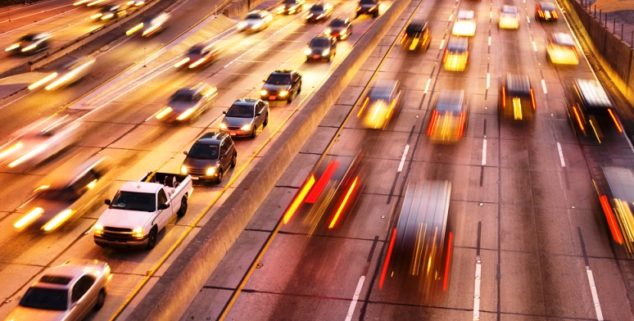Opinion
Let’s shift into high gear to fight vehicle-linked pollution
 The Harbor Freeway in Los Angeles. (Photo: Jose Luis Stephens, via Shutterstock)
The Harbor Freeway in Los Angeles. (Photo: Jose Luis Stephens, via Shutterstock)It’s time for California to change lanes when it comes to transportation.
For generations, transportation and land use decisions have placed inequitable burdens on the health of Californians with vulnerabilities. Communities designed almost exclusively for cars, even for the shortest trips, increase air pollution and reduce opportunities for building health into daily routines.
We know California is home to some of the most polluted cities in the United States, including seven of the ten smoggiest cities in the country, according to the American Lung Association’s annual State of the Air report.
As nurses, we see the impacts of air pollution on our patients’ health and lives, and observe that our more vulnerable populations are the most profoundly affected.
The health and well-being of residents throughout California are impacted by transportation-associated pollution, especially our most vulnerable frontline communities.
Fossil-fueled engines powering the tens of millions of cars and trucks on the road are by far the largest source of air pollution in California, translating to high rates of childhood and adult asthma, increased risk for cardiovascular diseases, lung cancer and thousands of deaths annually in California that could be avoided. Fossil-fueled transportation is also the greatest contributor to greenhouse gas pollution in California, which is driving climate change — a global public health emergency.
As nurses, we see the impacts of air pollution on our patients’ health and lives, and observe that our more vulnerable populations are the most profoundly affected. Transitioning to zero-emission vehicles is a public health intervention that can prevent a wide range of diseases— state leaders should make electric vehicles a central component of California’s path to healthier communities. We support a goal of 100 percent electric vehicles by 2030.
Many California communities have been designed to prioritize cars — pedestrians, transit riders and bicyclists are afterthoughts.
And yet we know that designing for and participating in active transportation improves both physical and mental health by lowering the risk of obesity, diabetes, and heart disease, reducing high blood pressure, and relieving stress. Safe and accessible bicycle and pedestrian infrastructure, paired with widespread electric vehicle adoption will reduce traffic congestion and pollution. These actions open the lane to improve air quality and overall public health, particularly for our community members who are most at-risk.
Fortunately, there are three key opportunities for California to transition toward healthier and equitable communities that support safe, affordable, and practical transportation options.
The California State Transportation Agency completed the Climate Action Plan for Transportation Infrastructure (CAPTI) in July 2021. The CAPTI provides a critical framework for incorporating health and equity into transportation funding decisions. The framework sets key goals for improving health and addressing climate change, while outlining equitable transportation options that focus on community, safety, and increased physical activity. We encourage state agencies to fully incorporate the CAPTI in all plans and investments going forward.
Second, we applaud Gov. Newsom for his proposed state budget that includes $15 billion for projects aligned with the CAPTI framework and billions more for zero-emission cars and trucks. This marks a multi-year commitment to healthier, more equitable travel choices and we encourage the Legislature to approve these investments this summer.
Finally, the California Air Resources Board is developing two key plans for meeting health-protective air and climate standards. Both the Climate Change Scoping Plan and the State Implementation Plan for reducing ozone (smog) must reflect the fact that California’s increasing growth in vehicle travel actually negates the benefits we should see from cleaner, electric vehicles.
These plans must include distinct, measurable and enforceable policy actions that will enable the state to meet clean air standards — standards that prioritize the urgent need to reduce and ultimately eliminate polluting vehicles. While transitioning toward an infrastructure that can support more electric vehicles, we must also pursue strategies to reduce vehicle dependence and provide active transportation options that will improve the health of Californians.
California has an incredible opportunity to rectify past decisions that have created inequities, health and safety hazards and steadily increasing pollution.
In short, yes, we must immediately change lanes to ensure a healthier future for all.
—
Editor’s Note: Katie Bolin, RN, and Alexis Duran, RN, are Registered Nurses and affiliated with the California Nurses for Environmental Health and Justice.
Want to see more stories like this? Sign up for The Roundup, the free daily newsletter about California politics from the editors of Capitol Weekly. Stay up to date on the news you need to know.
Sign up below, then look for a confirmation email in your inbox.

Leave a Reply